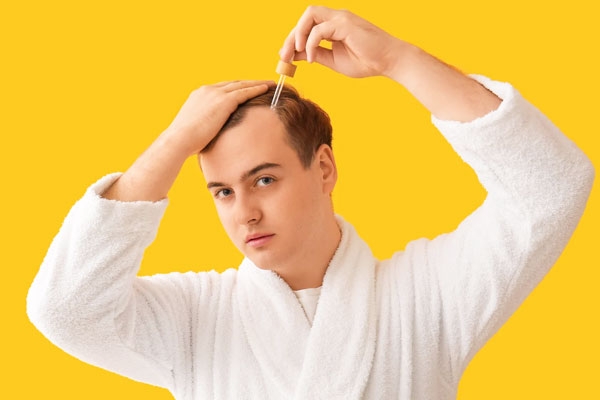
(Image source from: Canva.com)
The internet frequently features exciting stories, like losing weight in 10 days or growing hair in a month. Most people know these claims are often exaggerated. Now, something similar has appeared: scientists claim to have made a serum that can "restore hair in 20 days." This comes from a study by researchers at National Taiwan University, published in the scientific journal Cell Metabolism. Their work suggests that specific fats released by fat cells under the skin can make hair stem cells grow new hair, at least in mice. The scientists found that when skin is hurt, fat cells in that area break down and release certain fatty acids like oleic and palmitoleic acid. These fats, the team learned, tell sleeping hair follicles to become active. When these same fatty acids were put on mouse skin, hair grew back in about 20 days, leading to these big claims.
This research, headed by Professor Sung-Jan Lin and his group at National Taiwan University Hospital, and published in Cell Metabolism, looks at how fat affects human outcomes. It reveals what has been proven and what still needs proof. The study, named "Adipocyte lipolysis activates epithelial stem cells for hair regeneration through fatty acid metabolic signaling," found that when skin is slightly hurt, immune cells called macrophages cause nearby fat cells to release monounsaturated fatty acids (MUFAs). Hair follicle stem cells take in these MUFAs using a transporter called CD36, which then activates PGC1-a, a key controller of energy and cell growth.
When these fatty acids were put directly on shaved mouse skin, new hair grew in 20 days, showing that MUFAs can act like the growth signal without injury. The scientists have now patented this finding and are looking into skin creams for people to use in the future. This research shows a new biological connection between fat metabolism and how hair follicles work, a link that scientists had thought existed but had not fully demonstrated before. Current hair growth medicines, such as minoxidil or finasteride, focus on blood flow or hormones, not on metabolic signals.
If this fatty acid method works in people, it could be a safer and more natural way to regrow hair. The fatty acids, oleic and palmitoleic acid, are already found in our skin oils and in foods like olive oil and nuts.
But, the idea of "20-day hair restoration" needs to be looked at carefully. The test was only done on mice, and mice hair grows much faster than human hair. What works on shaved mouse skin in a lab might not work on human scalps dealing with baldness. Also, a researcher said he saw some hair growth when he tried it on his own leg, but this kind of personal test isn't real scientific proof. Proper human studies, with a fake treatment group and safety checks, haven't happened yet. Experts also warn that even though fatty acids are natural, putting a lot of them on your scalp might cause irritation or change the healthy balance of your skin. Until we know it's safe and how much to use, this serum is just an idea, not a product ready for sale.
So, while there's a good scientific reason for the excitement about this "hair restoration serum," it's too soon to be sure it will work for people.
The study in Cell Metabolism is real and shows promising outcomes in mice, but there's no proof it can make human hair grow back in 20 days. When human trials confirm it's safe and works, this finding might change how we deal with hair loss. Until then, experts warn against trusting hair products based on this study that you can buy without a prescription. For now, the best way to get healthier hair is by eating well, reducing stress, and using treatments approved by doctors.







